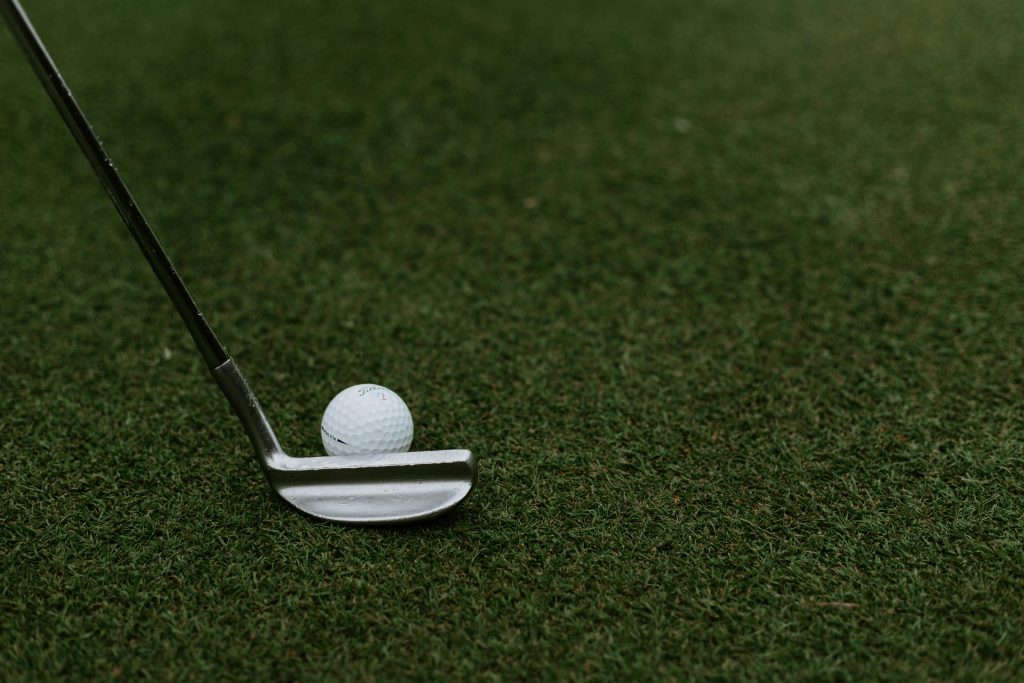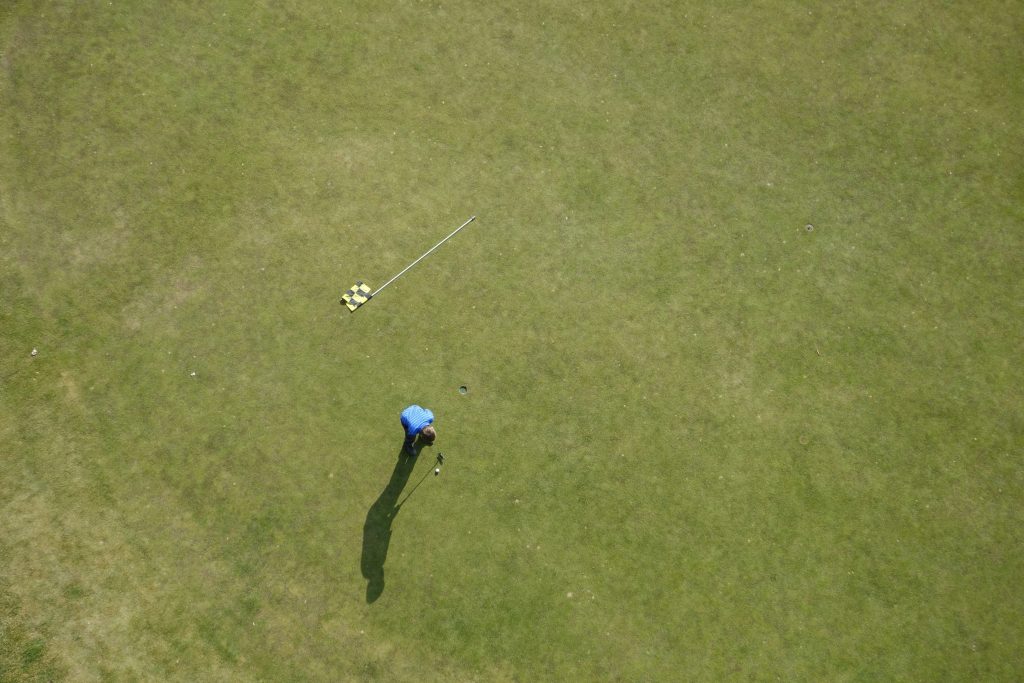Have you ever wondered about the nuances that distinguish effective putting strokes in golf from the less effective ones? Understanding the intricacies of putting strokes can significantly impact your game, yet these details often go unnoticed by those who are not intimately familiar with the sport. In this in-depth examination of golf putting strokes, you will embark on a journey through the science, techniques, and mental strategies that form the foundation of a successful putt.

Understanding the Importance of Putting
Putting is often described as a game within a game. It comprises nearly 50% of all strokes in a round of golf and can be the difference between a good score and a great score. While the drive usually gets all the glory, it is the putts that close the deal. Thus, honing your putting skills is essential if you wish to improve your overall game.
Why Putting is Crucial in Golf
The reason putting holds such importance is due to its role in determining your score. While other shots may cover larger distances, it is putting that ultimately sends the ball into the hole. Essentially, what you intend as a gentle nudge can make or break your performance across an entire round of golf.
Statistics and Putting Performance
Statistics reveal that professional golfers typically take fewer putts per round than amateurs. According to the PGA Tour, professional golfers average around 29 putts per round. Meanwhile, amateur golfers average upwards of 35 putts per round. This discrepancy underscores the value of developing a consistent and effective putting stroke.
The Anatomy of the Putting Stroke
A putting stroke might appear simple at first glance, yet it is made up of several critical components. To master putting, you must understand and execute these elements with precision.
Components of a Putting Stroke
The putting stroke consists of stance, grip, backswing, impact, and follow-through. Each of these components plays a vital role in determining the accuracy and direction of your putt. A slight misalignment in any of these areas can result in a missed shot.
Analyzing the Stance
Your stance is your foundation when putting. Your feet should be shoulder-width apart, and your weight balanced evenly. A stable stance ensures that your body remains steady, allowing you to make a fluid motion with your arms and shoulders.
The Art of the Grip
The grip is how you connect with the club, and it influences the stroke’s stability and control. The grip should be firm yet relaxed, with your palms facing each other. Popular putting grips include the reverse overlap, cross-handed, and claw grips. Each style offers different levels of control and comfort, and your choice should reflect what feels most natural to you.
Mastering the Backswing
The backswing sets the stage for the subsequent impact. A common mistake is taking too big of a backswing, which can lead to inconsistencies in speed and direction. Ideally, the backswing should be smooth and directly backward without any wrist action.
Impact and Contact
Impact is the moment the putter makes contact with the ball, and achieving a square impact is critical for accuracy. Your hands should guide the putter toward the ball with a pendulum-like motion, maintaining a steady pace.
Follow-Through: Completing the Stroke
The follow-through is a continuation of the stroke and is vital for maintaining the line and speed. A short, abrupt follow-through can cause the putt to feel incomplete, often negatively affected by the putt’s outcome. Ensure your putter continues smoothly in the intended path following impact.
Different Styles of Putting Strokes
Various putting strokes exist, each with its unique characteristics. Your choice of stroke should depend on your personal preferences and physical capabilities.
Traditional Stroke
The traditional stroke, or arc stroke, involves a slight arc motion where the putter head follows a natural path inside going back and then releases to square at impact, before following through lightly inside again. This stroke relies heavily on shoulder rotation and chest movement.
Straight-Back-and-Through Stroke
In this method, the putter moves directly backward and forward in a straight line. Here, the path of the putter is more crucial than anything, so alignment is key. Golfers with minimal wrist action often favor this type of stroke.
Sidesaddle Stroke
Also known as the face-on stroke, it involves standing beside the ball and using both hands to push the club directly forward. This stroke offers a more direct view of the putting line and can minimize inconsistencies.
The Science Behind a Good Putting Stroke
Understanding the science behind putting can elevate your game by enabling a more analytical approach to improvement.
The Role of Physics in Putting
The two main forces affecting a putt are gravity and friction. Gravity impacts the ball’s movement along the green, while friction slows the ball down and affects its direction. A successful putt is one that counters these forces effectively.
The Influence of Green Conditions
Putt results can vary significantly with changes in green conditions. Fast greens require gentler strokes, while slower greens demand more force. Familiarity with the speed and texture of different greens can lead to better shot-making strategies.
Break, Grain, and Topography
Golfers must consider the break and grain of the green, as well as its topography. Break refers to the way a putt curves due to the slope of the green. The green’s grain can cause the ball to adjust its path subtly, while the topography defines the broader slopes and inclines you navigate when putting.

Mental Aspects of Effective Putting
A great putt is not just a matter of physical execution but of mental acuity as well.
Focus and Concentration
Maintaining focus while putting is crucial. Players must silence distractions and concentrate solely on the task at hand—placing the ball in the hole. Mental discipline can separate high-achieving players from average ones.
Instinct and Visualization
Trusting your instincts and visualizing the putt’s path is essential. Visualization involves seeing the putt’s successful outcome before even taking the stroke. This helps in developing intuition and confidence during play.
Managing Stress and Pressure
Professional golfers face immense stress during critical putts. Managing stress involves not only technical adjustments but also mental strategies, such as deep breathing and visualization exercises, to handle high-pressure situations effectively.
Techniques for Improving Your Putting Stroke
With theory in mind, it is essential to implement practical techniques to refine your putting stroke to perfection.
Practicing with Purpose
Effective practice involves setting specific goals for each session. This may include focusing on distance control, alignment, or consistency. Purposeful practice translates into meaningful improvement over time.
Utilizing Training Aids
Training aids can offer immediate feedback and assist in developing proper technique. Devices like putting mats and alignment mirrors can be particularly helpful in ingraining muscle memory and ensuring correct posture.
The Value of Professional Instruction
Sometimes, outside perspectives are necessary to progress. Professional golf instruction can provide personalized feedback and advanced techniques, ultimately accelerating your improvement.

Common Mistakes and How to Avoid Them
Mistakes are part and parcel of the learning process. Understanding common errors can prevent you from committing them and help refine your putting.
Misalignment and Poor Setup
Improper alignment is a frequent error that can cause off-line putts. Be sure to regularly check your alignment and adjust your stance or grip as required to maintain proper setup.
Inconsistent Speed Control
Speed variability is another common culprit of missed putts. Aim to develop a consistent rhythm in your stroke, assisting with speed control regardless of green conditions.
Overthinking the Stroke
While technical precision is crucial, overthinking each aspect of the stroke can lead to tension and inaccurate shots. Remember to trust the practice you have put in and remain relaxed while executing the stroke.
Real-World Success Stories of Great Putters
Observing elite golfers and their strengths offers valuable insights into successful putting strategies.
Anecdotes from Touring Professionals
Many successful professional golfers, such as Tiger Woods, have demonstrated remarkable putting prowess. An in-depth analysis of their techniques reveals common threads of alignment, control, mental toughness, and confidence.
Lessons from Legendary Putts
Analyzing historic putts, such as Jack Nicklaus’s 1975 Masters putt or Tiger Woods’s dramatic chip-in at the 16th hole during the 2005 Masters, sheds light on the factors contributing to iconic moments in golf history. Each instance combined preparation, skill, and mental resilience.

Conclusion: The Art and Science of the Putting Stroke
Putting is more than a mere technique—it is an art steeped in delicate precision, abetted by scientific principles. From the fundamentals of stance and grip to the mental acumen required for success, mastery is attainable through informed practice and commitment to improvement. For anyone seeking to enhance their putting proficiency, understanding these various components, and implementing them into practice, will undoubtedly pave the way for excellence on the greens.

Ed Baucom is a passionate and dedicated golfer with years of experience both on and off the course. Known for his insightfulness and attention to detail, Ed brings a wealth of knowledge to the golfing community, particularly through his reviews for Golf Aid Advisor. His expertise in evaluating golfing equipment, training aids, and techniques has made him a trusted voice for golfers seeking to improve their game. Whether testing the latest clubs or offering advice on swing mechanics, Ed’s thoughtful and practical assessments help players of all skill levels enhance their performance.

